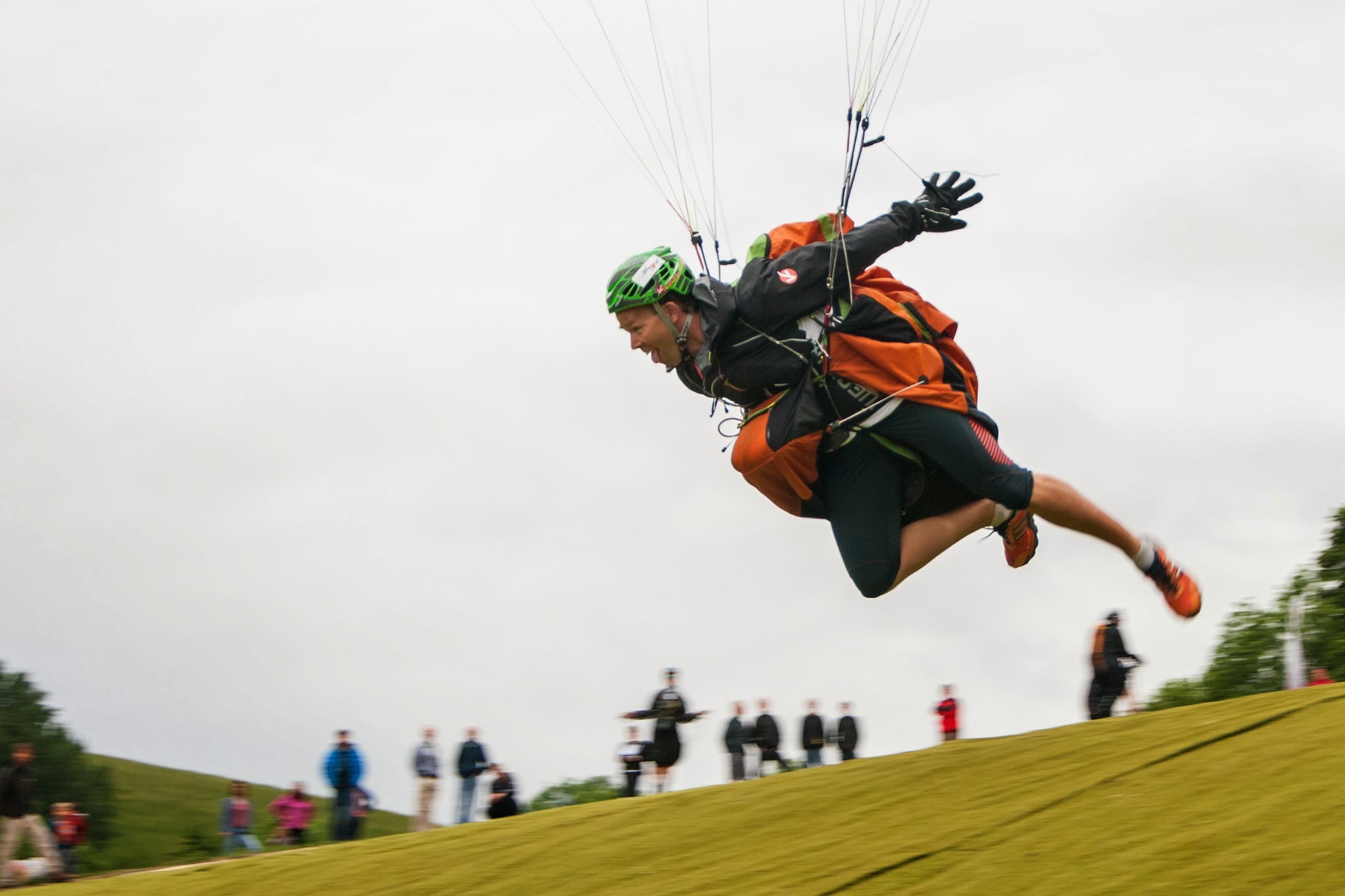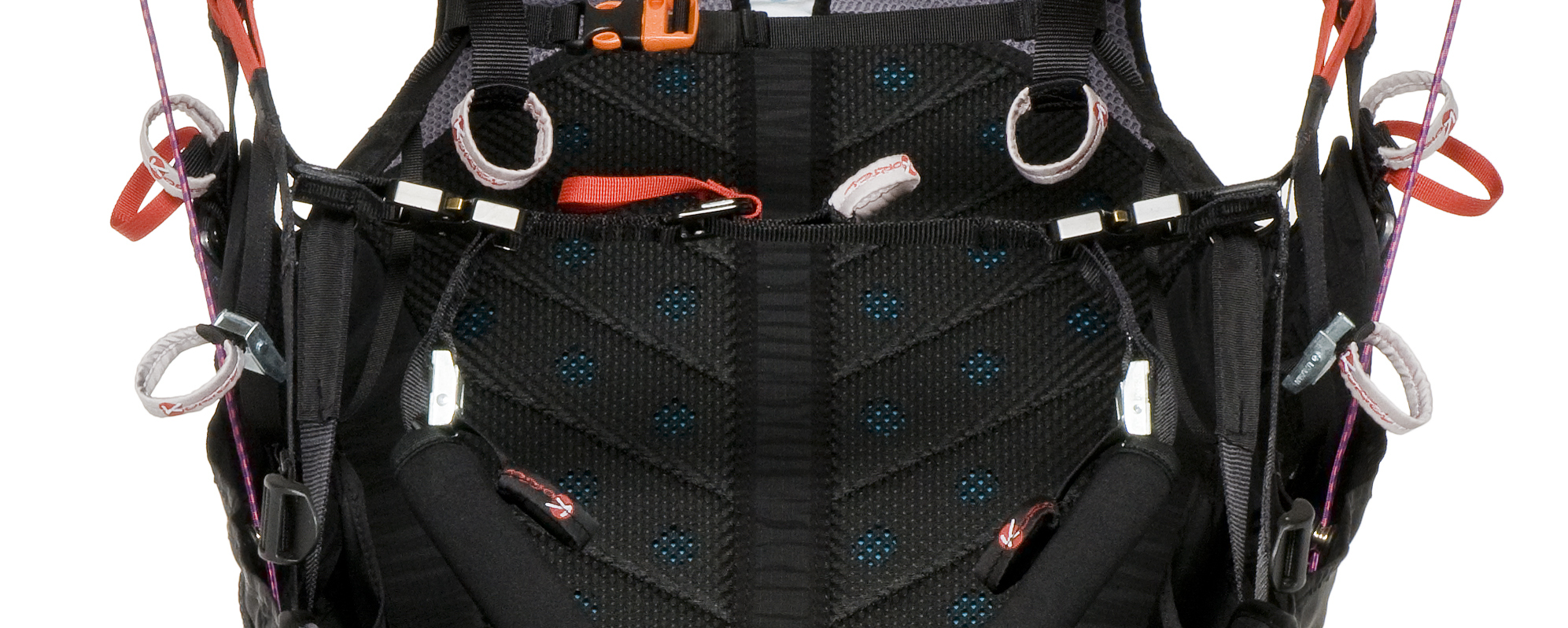
Reflection on forgetting of a paragliding strap
Every year, several pilots die after forgetting to strap themselves properly in their harness. These are usually not beginners...
During a security evening organized by the CDVL74, a quick public poll revealed that 15% of them had already taken off forgetting to tie in one or all of their straps.
CAUSES and CONSEQUENCES
The causes of these omissions can be numerous and varied:
- Being disturbed during preparation
- Preparing in a hurry
- Being at less than 100% in shape
- Having personal and/or professional concerns
- Missing a takeoff and detaching yourslef in part to get back more easily
- ...
A must see: the film "Security" from the FFVL: To strap in is vital.
https://www.youtube.com/watch?v=2bdZJeWiTos
Other FFVL safety films are available at: https: //federation.ffvl.fr/pages/parapente-films-securite
As a general rule, in case one forgets to strap in (for various reasons) and during the takeoff phase, the harness "rises" in the back during the ascent of the wing and the frontal strap is trapped under the arms of the pilot who then finds himself in an unexpected situation and risks taking off at an altitude sufficient to begin to be dangerous (several metres). Once stuck, and if the wing continues a trajectory moving away from the terrain, the reflex will be to lock the arms down and try to go land. Unfortunately this position cannot be maintained for more than a few minutes because the straps compress the arteries under the arms and prevent the blood flow from properly reaching the muscles: the arms will therefore open up by themselves despite the best will in the world...
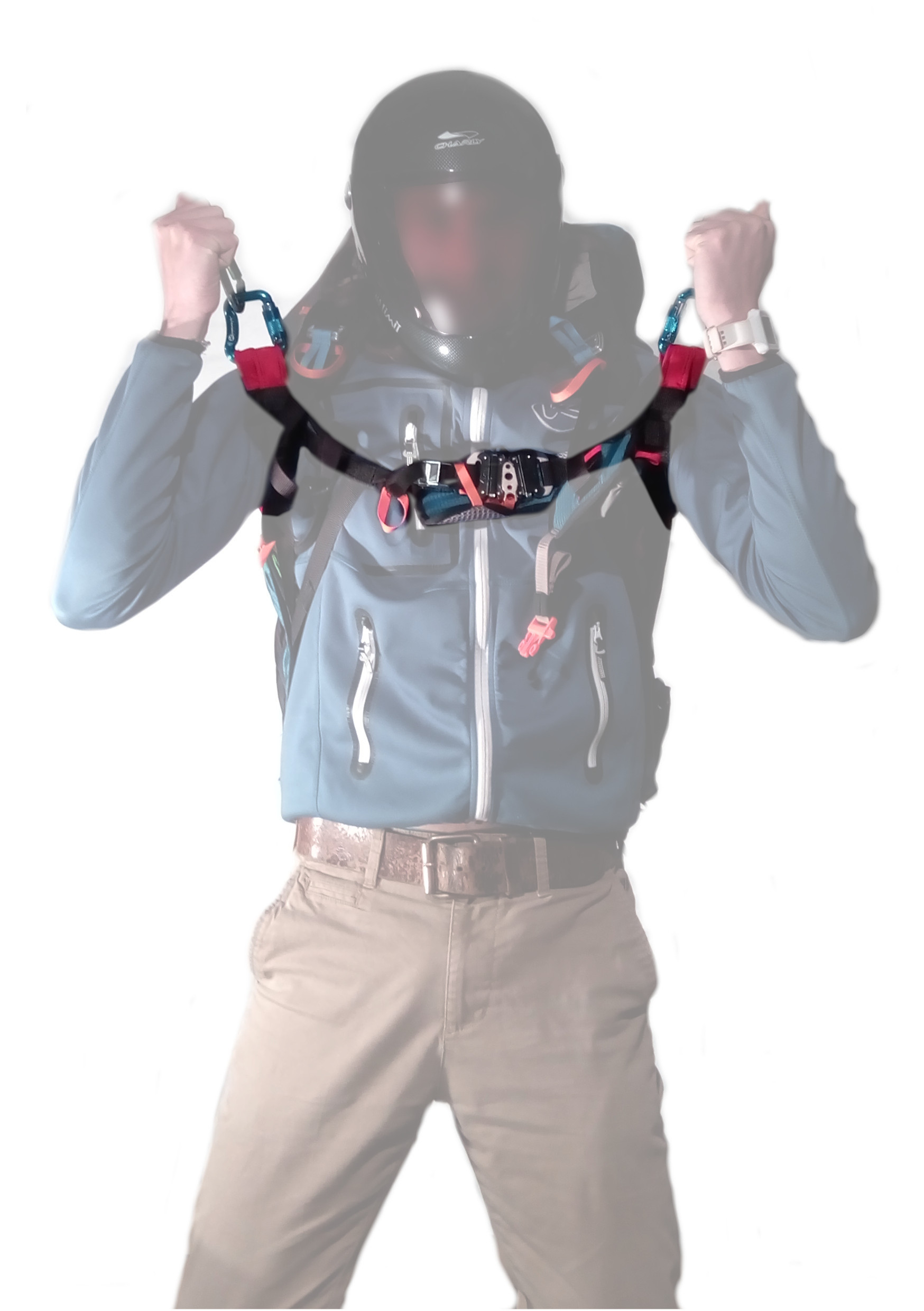
There are a few techniques to implement if this ever happens to you:
- Climb back in the harness by grabbing the risers with your feet. -> requires training, a good fitness level, and very fast implementation to not be tired.
In video: https: //www.youtube.com/watch?time_continue=20&v=j6BKfNpK19U
- Make a quick return to the slope or trees to limit the time spent in this position and attempt a landing. -> However, it can be difficult to maneuver the wing if the brakes have been dropped, which will probably be the case if you find yourself in this situation (see photo above)...
Up to each and everyone one...
It may also be that no strap were attached, and the simple pressure of the shoulder straps gave the impression of having attached the harness completely! In this case, when the harness goes up, it is enough to let go of everything and lift your arms so that the harness can freely climb up to get out without getting stuck, or else to do the same (high arms to go out not get caught) keeping the brakes so as to stall the wing.
Check it out: a pilot comes out of his harness at takeoff after he realized that he was not at all hooked in.
Careful also with the chest strap, which despite its apparent weak construction (small plastic clip) can be strong enough to get caught under the head or chin of a full helmet and generate a sufficient blockage to prevent the harness from escaping from the top as shown above.
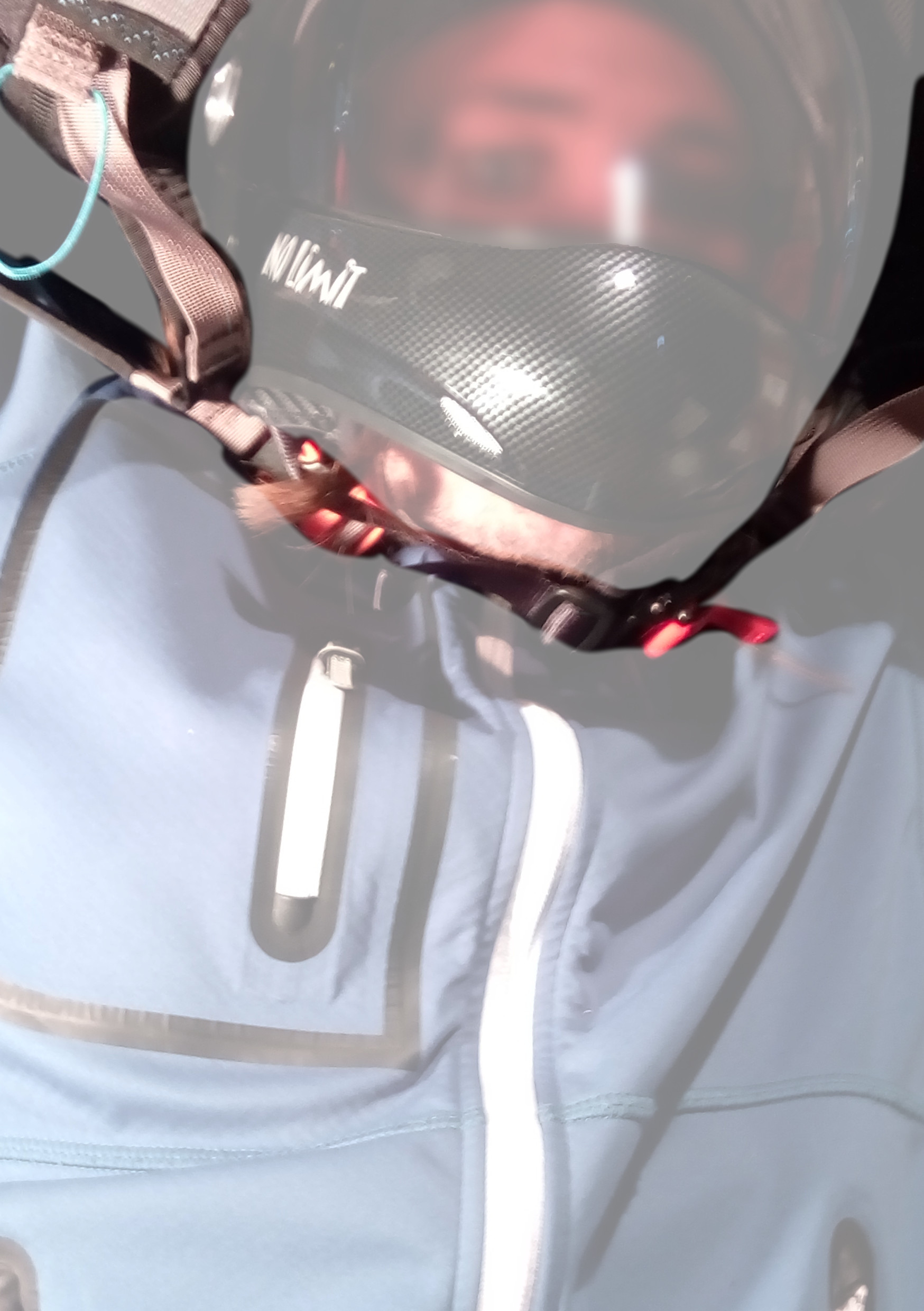
Even if we find that all the causes identified so far are of human origin, manufacturers must integrate these aspects in their design in order to propose technical solutions that help avoid these worst-case scenarios.
The solutions described below are intended to be general in nature to allow you to compare the existing solutions from different manufacturers. The remarks provided only concern the hooking aspect of the buckles and not the intrinsic qualities of a particular harness.
TECHNICAL SOLUTIONS : The geometry of the harnesses
Harness with separate thigh straps + frontal straps
It is probably the most well known geometry, and it is also the one that can generate the most problems!
On this type of geometry, there are 3 separate straps to attach to completely close the harness: the frontal, and the 2 thighs. Counter-intuitively, it is the thighs (and not the frontal) that are the most important at takeoff because they are the ones that prevent the harness from riding up your back and letting the frontal strap get stuck under the arms.
To date, the vast majority of harnesses with this geometry are equipped with an "anti-forget" strap (in red on the photo) that is attached to the strap of one of the thighs and has a part of the loopwork that will lock the frontal strap. Thus, even if the thighs are not closed for takeoff, or if they are reopened later (such as after a failed take-off to facilitate the walk up), this strap will prevent the harness from going up too high in the back. It will then be possible to properly sit in the harness by using your hands, and to close the remaining open loops. Careful however with the length of this anti-forget: the longer it is, the lower the pilot will end up, with the potential to be too low to use the brakes.
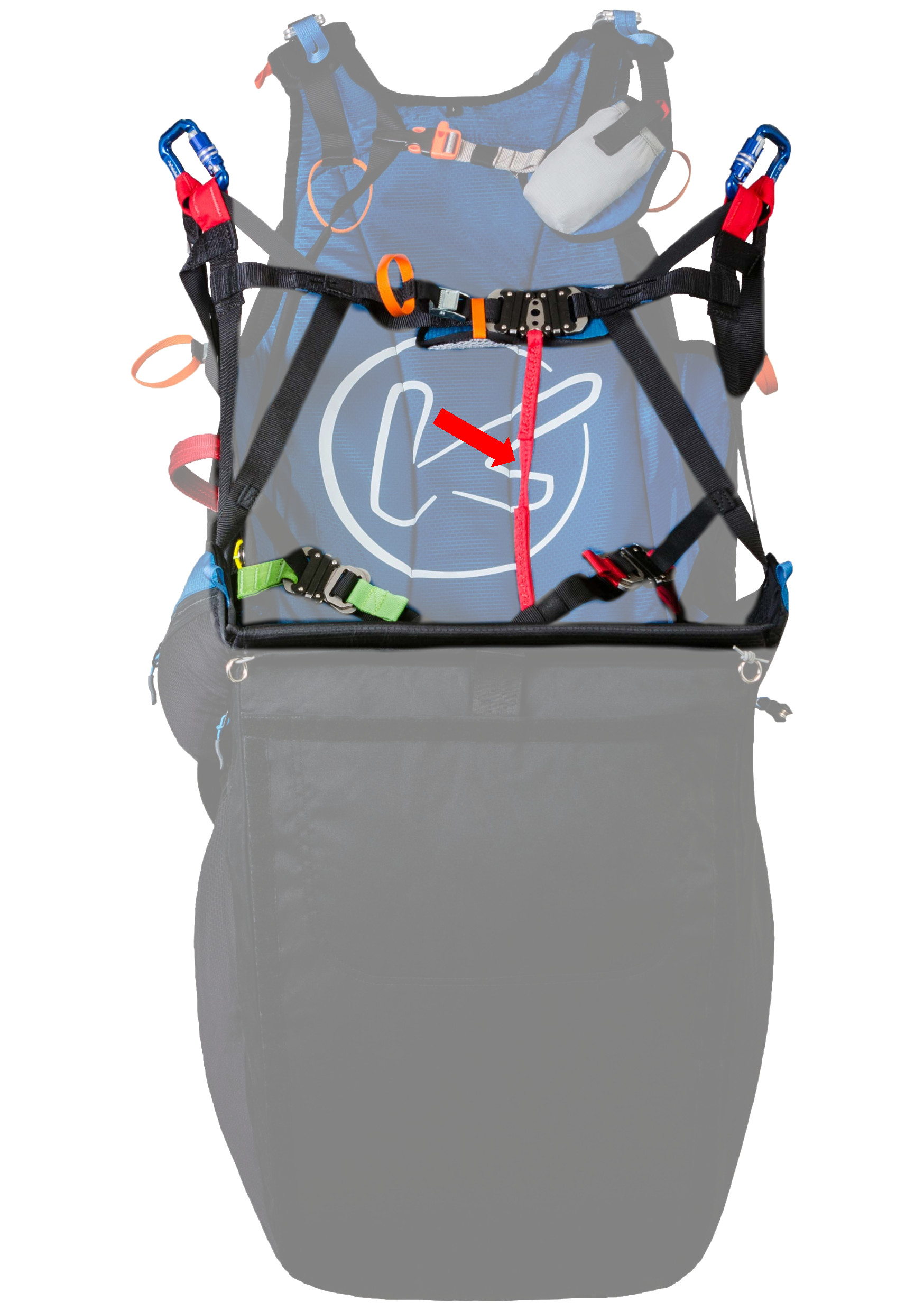
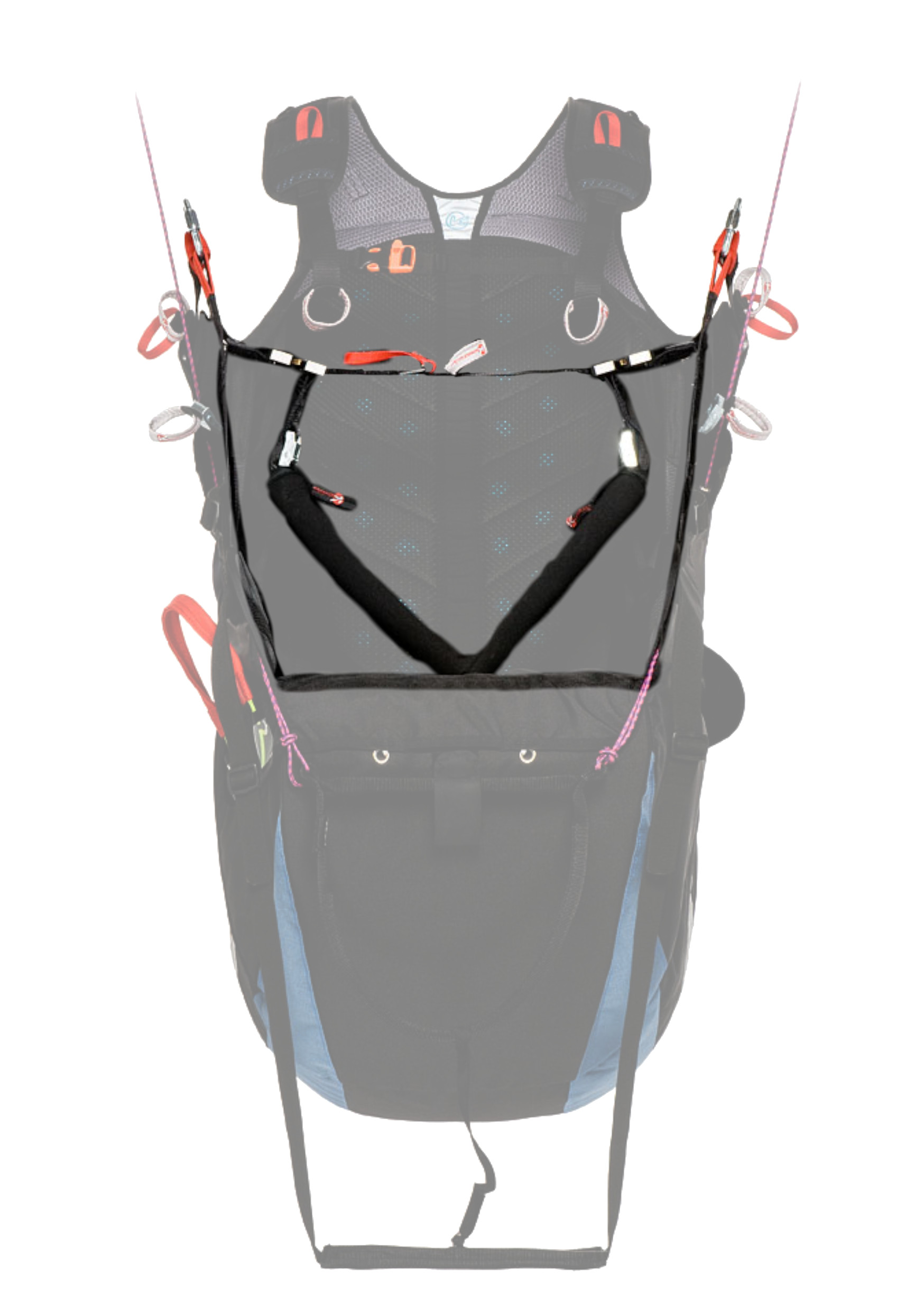
Harness with "V" anchor
This technical solution used in many current harness models makes it possible to compensate for forgetting to strap in by its own design. Indeed, once one of the straps is attached, it becomes impossible to fall from the harness.
In fact, the 2 thigh straps can be considered to be united to the frontal strap, and therefore the anti-forget strap presented previously is already integrated.
The position will be quite uncomfortable (for sure!), but it will avoid any fatal accident.
WARNING: depending on the seat of the harness (seatplate, separate thigh legs, hammock), the position of the pilot can generate an asymmetry in the harness, which will certainly result in a rotation of the wing.
Harness to slip on (without buckles)
This technical solution is common in many mountain or hike&fly harnesses, where loops have simply been removed to gain weight, but not only.
For the Kolibri, for example, it has been deliberately designed without closing loops to limit as much as possible the risk of forgetting to strap in for the original target audience, namely the pilots of walking & flying or flight bivouac competitions. Indeed, the effects of fatigue accumulated during more or less long hikes, and in the precipitation that can be generated in the phases of preparation for takeoff (competition, changing conditions, wind reinforcement, etc...) can be the origin of many causes of forgetting to strap in. Pilots such as Antoine GIRARD have definitely confirmed this to us.
These harnesses may betrickier to put on, but it is also a guarantee of additional safety in view of the uses for which they were designed.
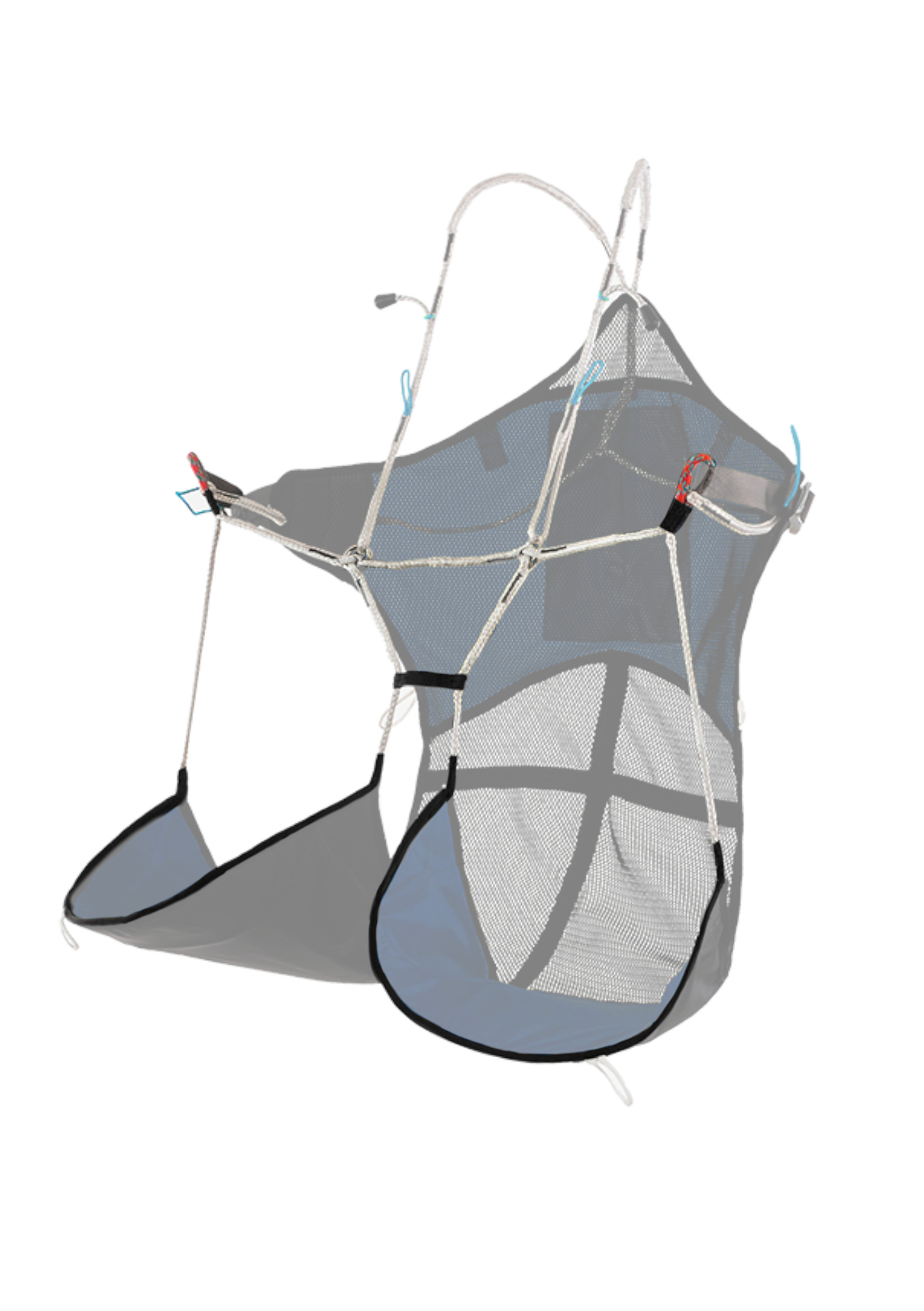
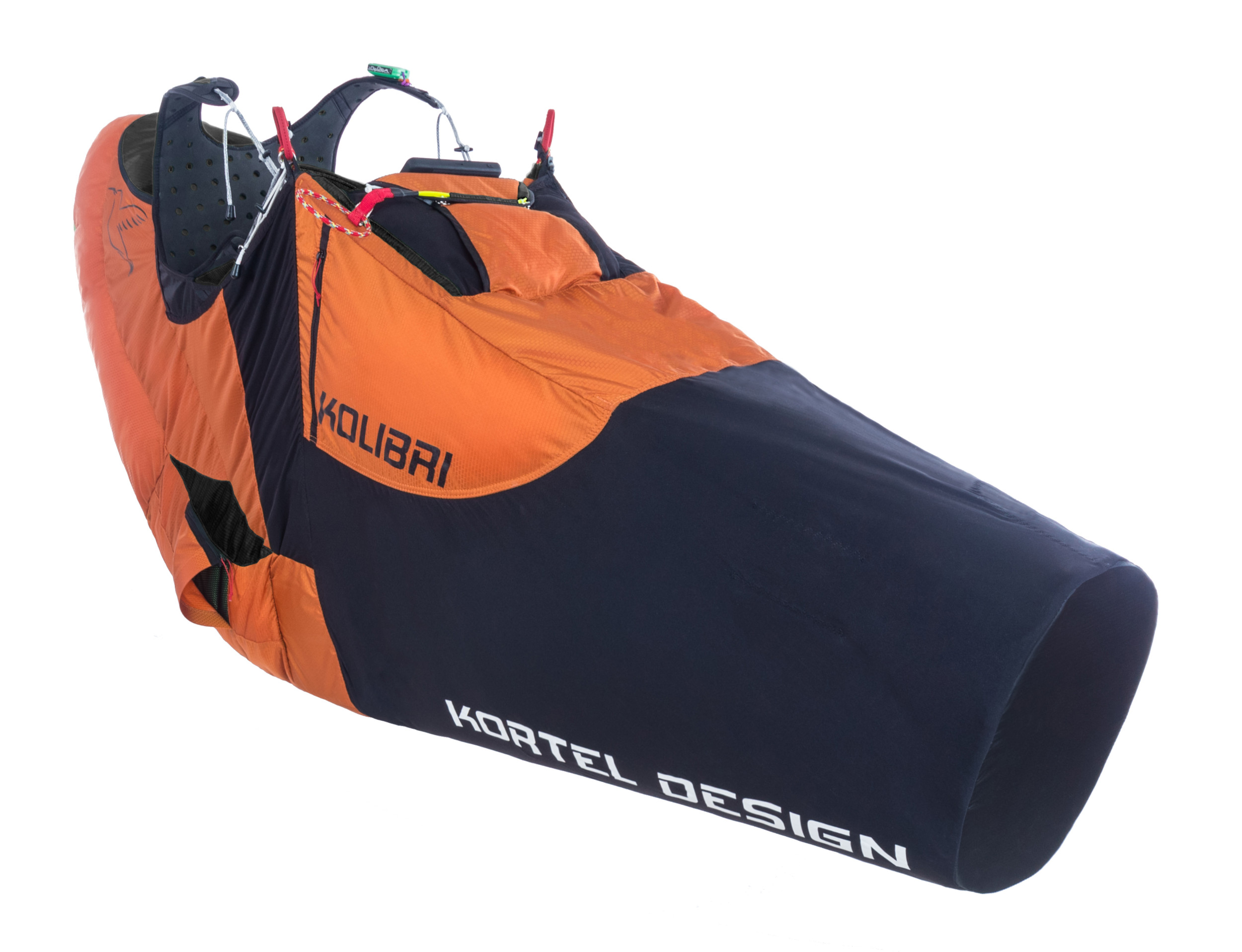
There are therefore different technical solutions provided by the manufacturers on the current harness models, and it is your responsibility to make sure you are informed during a purchase.
OTHER POSSIBLE CAUSE: Oversight
As we have seen above, one of the major causes is outright omission (for different reasons).
Another major risk is probably forgetting by "shadowing". Some accessories that are added to the harness can partially or completely obscure the area where the thigh straps and buckles are located. And when you lose sight of this area, the risk of forgetting to strap in the thigh loops is increased.
This is particularly the case with cocoon harnesses, with the frontal rescue parachutes, and with cockpit accessories...
There are also some solutions proposed by manufacturers to compensate for these possible omissions.
ANTI-FORGETTING ACCESSORIES
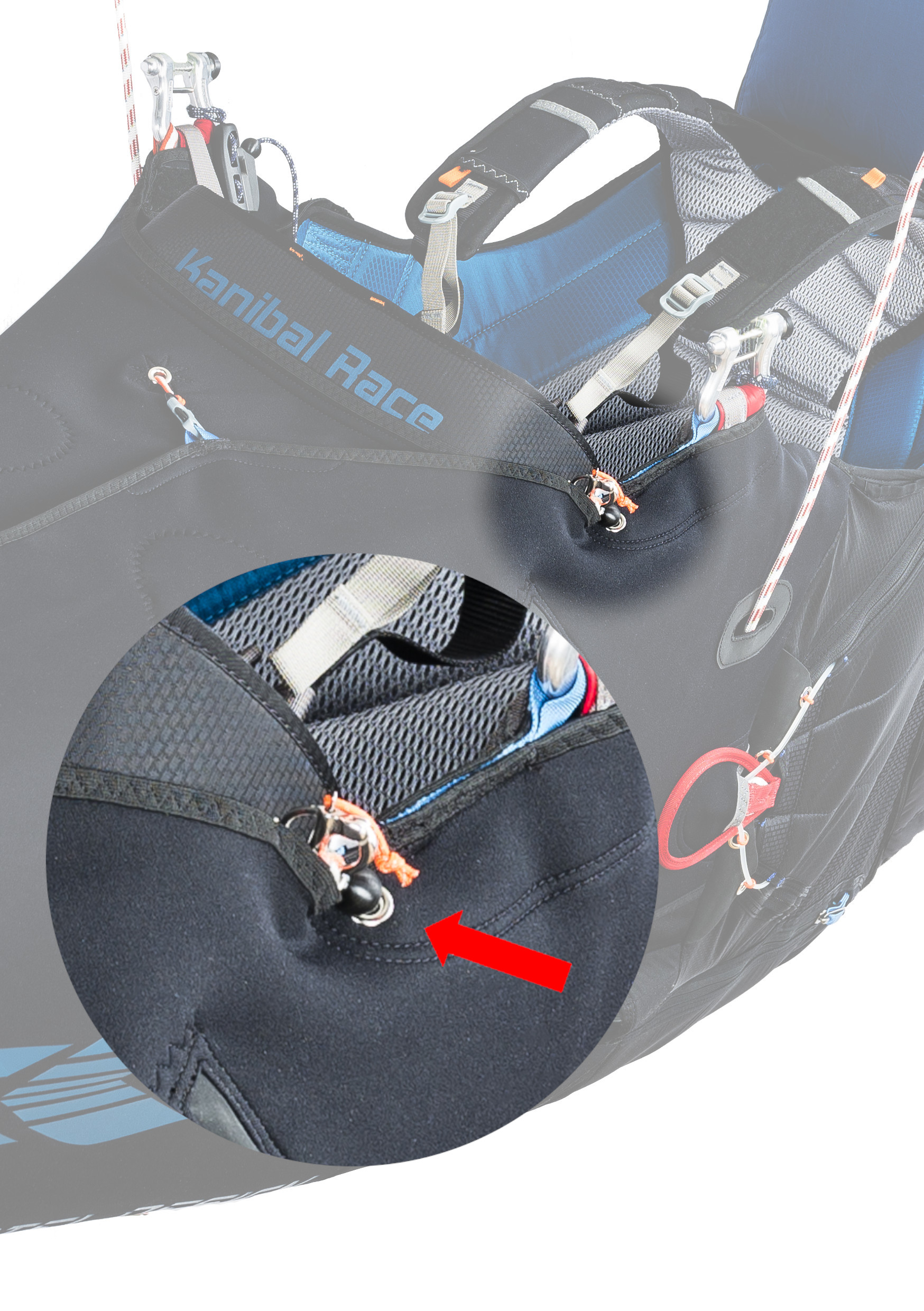
Cocoons
Cocoons can't be considered accessories, as they are often an integral part of the harness. Their use can, however, easily generate strap-in omissions.
In general (!) pilots take care of their equipment, and pay attention not to drag their harness on the ground, not to dirty it,... So the first thing you might want to do on takeoff is to close the cocoon to prevent it from dragging on the ground, thus masking the visibility on the legs.
Some manufacturers equip the closure of their cocoons with an anti-forgetting system connected to one of the thigh straps. Thus, when you close the cocoon, you close at the same time one of the thigh straps in order to prevent the harness from going up (as in the video: https: //www.youtube.com/watch?v=M-lT6Rw9m8k ) if no other buckle is closed.
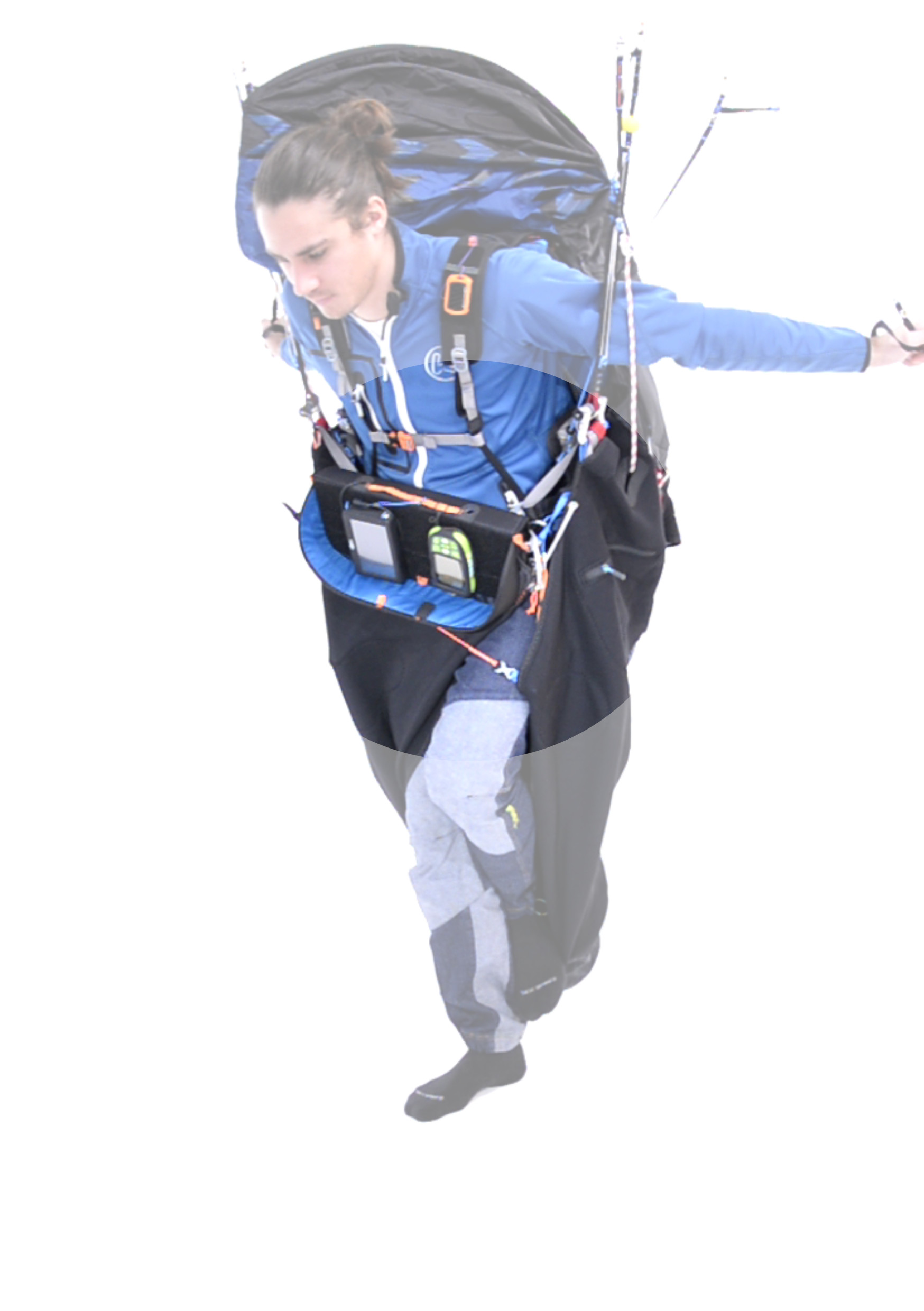
Cockpits
In the same way, the cockpits are usually hung quickly, to avoid dragging them on the ground, risking damaging the instruments placed on it. As with the cocoon, they can create a screen to the visual check of the closure of the loops.
Some manufacturers have taken into account this potential risk, and equipped their cockpit with an anti-forget system that connects one of the thighs to the connection of the same cockpit. The installation of the cockpit automatically causes the closure of one of the thighs (as for the cocoons above).
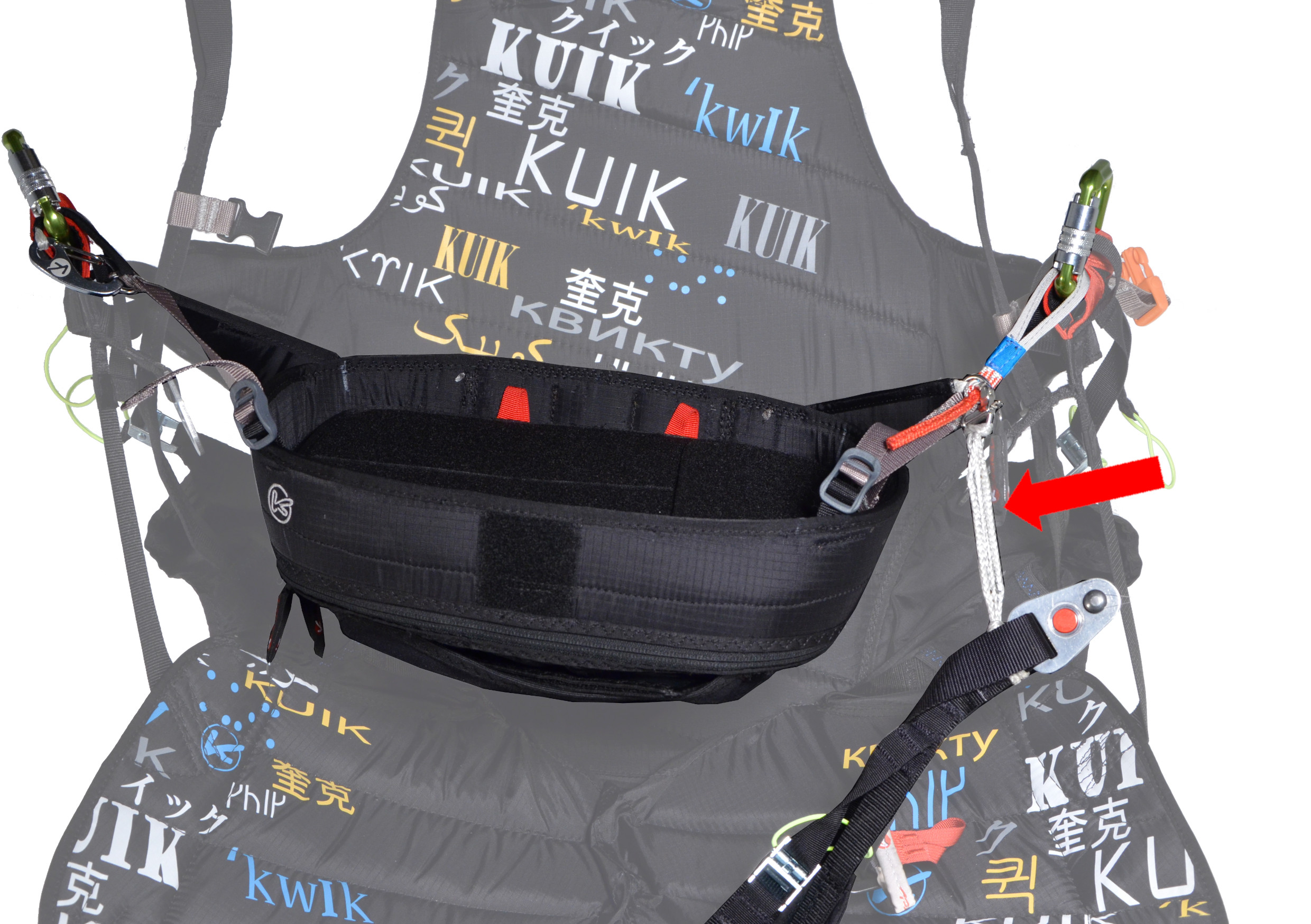
Anti- forgetfulness " Home
If your harness is not equipped with one of these anti-forget systems, or if you dread to find yourself one day in one of theabove-mentionned cases, there is a simple solution to implement on any harness:
Simply lock one of the thigh loops in the closed position.
To do this, you can use adhesive, elastic straps, a neoprene sleeve, or any other system that will prevent you from inadvertently opening this loop. For installation in the harness, you will have to pass your leg in the closed thigh, and you will find immediately in a situation that will prevent you from falling from the harness if you forget to close the other loops.
CONCLUSION
As we mentioned above, the causes of forgetting are plentiful and of human origin. Manufacturers are trying to provide technical solutions to assist the pilot and allow him to avoid certain dramatic situations, but these solutions cannot be considered "perfect" because they require systematic action from the pilot who will have to do things properly to ensure his own safety.
Do not hesitate to diffuse and share this reflection with as many people as possible, to make as many pilots as possible aware of this risk and to avoid the already too numerous accidents.
We have the chance to practice one of the most wonderful outdoor activities: flying
So take care of yourself, and enjoy your flights!
